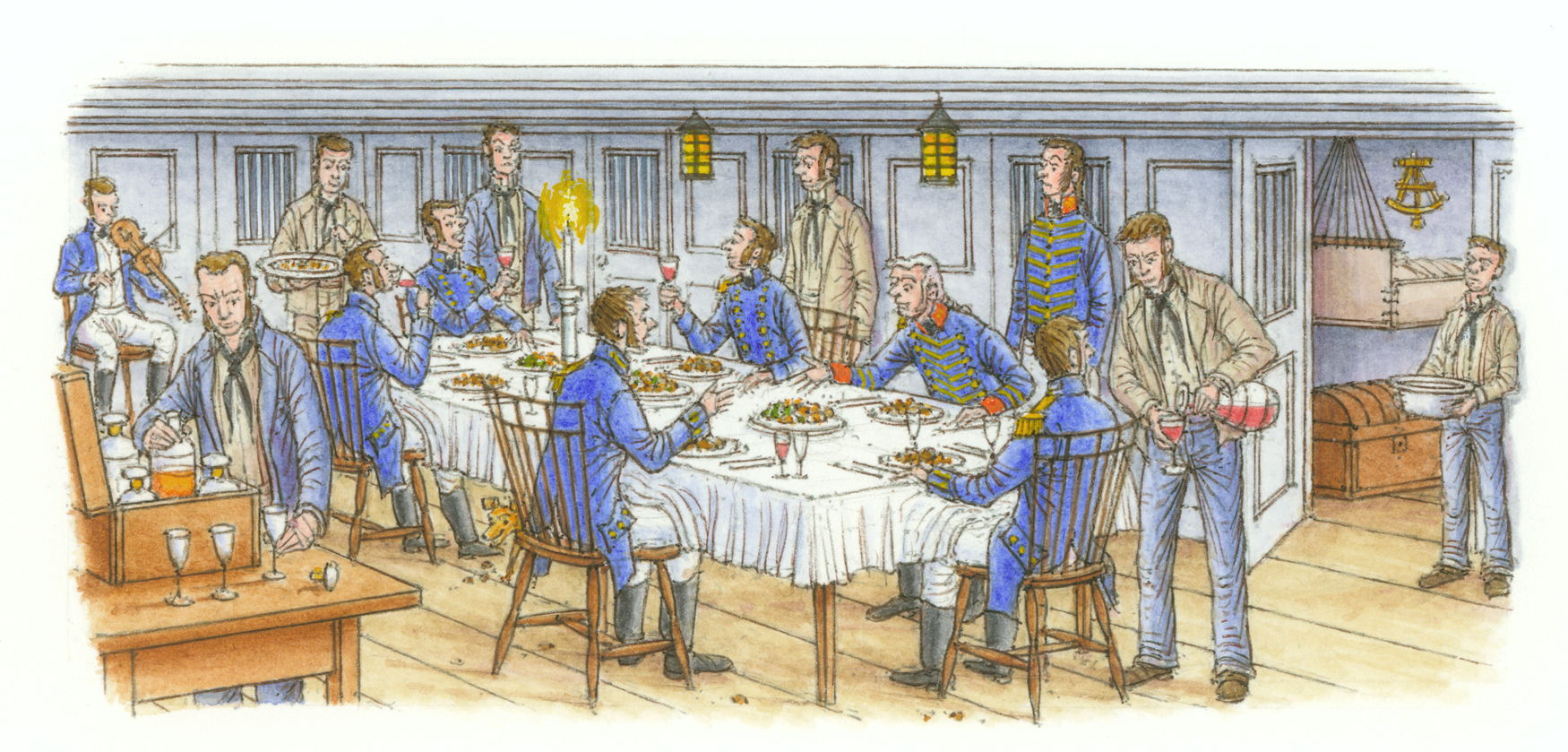When Americans sit down to Thanksgiving dinner, many take a moment to reflect on the things for which they are thankful. But those snug in their landlocked dining rooms and kitchens will probably not give a thought to the fact that their tables are stable and their crockery preserved from harm. For those at sea, however, a gentle swell and a steady ship meant the difference between an enjoyable repast and a frightening test of endurance.
An officer on board the U.S. frigate Columbia, on a voyage to the East Indies in 1840, described the havoc wrought on a ship and its occupants by towering waves and battering winds:
“We had been rapidly driving on before a brisk wind from the time we left Rio till the second of August, when the signs of the weather began to assume a stormy aspect: and by sunset it was generally remarked that we already had ‘extremely dirty weather about us.’ The darkness increased with the hours —the sea rolled higher and higher— the winds whistled through the rigging, and creaking blocks—the rains began to pour violently, and the lightnings flashed athwart the dark conflict of elements, as the buoyant and staunch Columbia groaned and heaved from side to side through the boisterous waters. The ship scudded boldly on, under close reefed fore-sail and main top-sail; the water poured into the closed ports of the gun deck, and many a wave dashed over the nettings of the quarter. Everything unlashed was afloat, and in a chasse, de chasse movement. Crash —crash ! was now and then echoed through the ship, as the knell of departed crockery. The dishes, glasses, and decanters, and even the table in the wardroom were thrown into pi; all the frangible articles, with water and middies, were mixed in either steerage, and we found in the cockpit all the furniture capsized—a candle tossed into a youngster’s hammock, hitting him in the mouth—the castors mingled in a salad of wooden tooth-picks, and sundry stores floating from side to side in fearful confusion. I was swinging in my cot upon the gun deck when the first tremendous lurch of the ship aroused me; and as I swung rapidly against the beams above, I thought the whole deck had given way over head, and was falling in upon me.”1
Under these circumstance, all the regular routines of life became impossible tasks. And yet, certain days required a show of celebration, no matter the weather.
On July 4, 1846, Constitution beat its way around Cape Horn. The thermometer had dropped to 34 degrees, and the waves seemed like mountains all around. According to Lieutenant John B. Dale, “…the Frigate rolled tremendously and…our ‘independence dinner’ underwent marvelous transmutations and chaotic confusions, not to mention broken crockery, gravy capsized, and turkies [sic] that took wing even from under the carver’s fork…”2
But at that point, the ship was homeward bound after its round-the-world voyage, and that was something to be truly thankful for.


[1] C. S. Francis, Voyage Round the World of the United States Ships Columbia and John Adams: With Accounts of the Various Places Visited, and the Manners and Customs of the Inhabitants in South America, Africa and the East Indies (New York: C. S. Francis & Co., 1847), 150-160.
[2] Journals kept by Lieutenant John B. Dale while serving on board USS Vincennes, Constitution, and Porpoise, John B. Dale Papers, 1831-1846, New England Historic Genealogical Society, Boston, Massachusetts.
The Author(s)
Matthew Brenckle
Research Historian, USS Constitution Museum
Matthew Brenckle was the Research Historian at the USS Constitution Museum from 2006 to 2016.